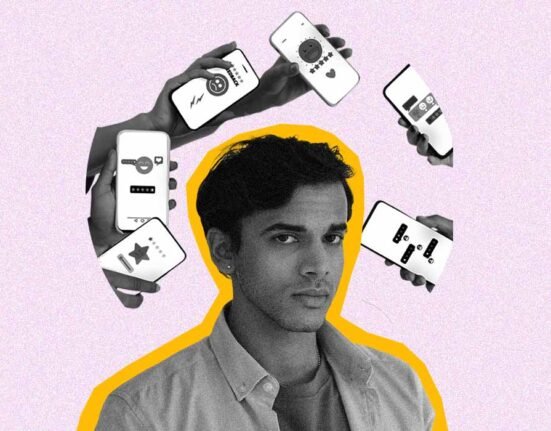An eight year old, wandering on streets, trying to catch fishes in his water bottle, befriending dogs and playing with kites. His world is filled with wonders; colours, dogs fishes. While trying to solve tables, his imagination sees war of planets, where planet 3 smashes into planet 6. Obviously, he doesn’t get the table right! Likewise, words kept jugglingin his world, numbers fly and everything make sense differently, letters inverted, words misspelt. A series of poor academic performances and commonly understood irresponsible behaviour, lands him to a boarding school to ‘be disciplined’. He pleas and cries and shouts to relent but is silenced. Silent outside, he cries his heart out hopelessly when his parents return, dropping him to hostel… Things doesn’t change in new school as well. With added trauma of separation from his family, he faces the same old challenges of poor marks, homework and neatness. In his effort to fit in, the boy begins to lose all his self-esteem. The happy go lucky kid turns quiet and aloof. Until the day, there arrives a teacher!
Sounds familiar? It was the iconic movie which left all of us shell-shocked with amazement by the development of its story and the end. It probably, was the biggest mainstream Bollywood movie to portray a disability, mental disability and even more specifically learning disability with so much conviction, maturity and sincerity. The achievement of this movie was to be able to establish the fact that children like Ishaan are labelled ‘disabled’ because, we, as a society are incapable to understand that they are differently abled.
Cinema as a Medium
There is a popular saying, “A picture is worth a thousand words”. Then, of how many words is a motion picture! Cinema is not only a popular medium of mass communication but also a reflection of society, a tool for change, a collective voice and a powerful medium of expression & storytelling. As a popular American filmmaker, David Lynch writes, Cinema is a language. It can say things—big, abstract things. Biggest attraction of cinema is the visual mode, which enables literate, illiterate, children, adults, and people from rural or urban areas, alike! It is deemed as an art form, a source of entertainment, a social document as well as a social critique. Maybe, that was the reason, Nehru government funded Film industry right after independence. If we try to draw themes in Bollywood starting from as early as 1930s, it is easily found that people with disabilities are scarcely represented. Even in this smaller space, they are not adequately represented. People with intellectual disabilities, in particular have generally been stereotyped as comic supporting actors or as an object of pity & dependence. Some of the commercial movies have also experimented with disabilities as heroism. But as a whole, it depicts a very poor status.
With commencement of 21st century i.e. by early 2000s, we can see a mark of change. Cinema started becoming more inclusive, welcoming new realities with progressive movies coming to mainstream. This paradigm shift in new era produced at least some films dedicated to disabilities with some sincerity toward the real issues.
Movies of New Era
Post 2000, we saw a little acknowledgement and responsible role portrayal of mental and learning disabilities as compared to previous age. 2003 movie, Koi Mil Gaya, depicted a story of intellectually disabled young adult, his struggles, conflicts and the social stigma with mixed emotions of pity, hatred and inferiority.
In the year 2005, a less famous movie ‘Main Aisa Hi Hoon’ came out. It was about struggles of an autistic father. In some ways it was a fresh perspective showing a father fighting for his daughter, the disability, sympathy related to it emerged as lesser of theme. The movie wasn’t successful and hence went unnoticed.
2010 movie ‘My Name is Khan’ with big star cast, was another one that strikes a chord. Protagonist suffers from Asperger’s syndrome. Although it is somewhere on the spectrum of autism, it isn’t exactly a learning disability. The story was woven not only around the difficulties of being disabled but also the genuine difficulties as an equal human being. These movies somehow contributed to mitigation of general stereotypes associated to such characters before.
Film Barfi, released in September 2012, is to be gauged as one that can change Bollywood’s perception about the abilities of the disabled. The commercial success, artistic pleasure and a well-researched storyline; where there is a scope for absolutely usual life with love, relationship, jealousy and every human phenomenon including errors!
But the greatest of all, which left a remarkable imprint on us as a society and country was ‘Taare Zameen Par’, which beautifully convince that adults are victim of ignorance and these children are sufferer of a trap which they aren’t responsible for. It was a small but fruitful effort to take the concept of learning disability to masses, it tried to create some sort of acceptance.
Several celebrities came forward and talked about their struggles with similar disabilities. Films and film stars ought to create an emotional connect for general public and it is clearly experienced. Schools across the country welcomed this movie.
It was year 2005, when the first international disability film festival in India was organized by the Chennai-based NGO, the Ability Foundation. The festival was a unique and inspiring showcase of extraordinary films from around the world with an objective of raising awareness about disability issues and breaking stereotypes about people with disabilities. With growing internet and media revolution, society in general got somewhat informed. Although, being honest, the kind of impact film industry is known for has been missing when it comes to awareness about learning disabilities.
.jpg)
Portrayal of Women
According to a study by World Bank, commissioned by govt. of India, Bollywood movies have not yet characterized much of strong enough disabled ladies. In the first place, men with disabilities feature far more often than women with disabilities. In context with Indian cinema, disabled women are considered as doubly weak. First for being a woman, second for being disabled. Not only this, they are usually shown living such hindered lives waiting for someone to come and make their lives worth living. Movies are one of the things we look up to. Clearly, it’s a classic example of modelling proposed in Bandura’s ‘Social Learning Theory’.
“Most human behaviour is learned observationally through modelling: from observing others, one forms an idea of how new behaviours are performed, and on later occasions this coded information serves as a guide for action.” (Bandura)
If our movies are showing women weaker and helpless or not strong enough to carve ways for a fulfilling life, to deal with the disability and to learn skills to live with them, there is a dire need to ponder upon if we really are providing good models to learn from? Well, not just females we require to show strong characters who accept the problem, fight with difficulties and learn how to flourish with it.
Cinema in Other Parts of World
By the time Indian cinema was busy showing the various learning disabilities in a pitiable manner, the west surpassed by being more liberal in terms of portraying disabilities. The use of cinema in order to educate general public about LD brought a new wave in the industry. The fine line between funny and disgraceful is not widely understood by Indian cinema yet, which is the reason we witnessed several illogical presentation of disabilities. West, on the other hand, was more considerate earlier than us, in illustrating stories with disabled people.
One prominent example in this category can be the Canadian film named – A mile in his shoes, which justified the role of an autistic pitcher with utmost compassion, patience and background research about the disability. Indian cinema started working on these skills post 21st century, before that this aspect was used to enhance the dramatic effect and give the story a new turn.
India ratified the UNCRPD in 2007 and implemented the RPWD Act, 2016 which fairly give importance to specific learning disabilities and autism spectrum disorders. The nomenclature mental retardation is replaced by intellectual disability which is defined as “a condition characterized by significant limitation both in intellectual functioning (reasoning, learning, problem-solving) and in adaptive behaviour which covers a range of every day social and practical skills including specific learning disabilities and autism spectrum disorders.
The changes in policies are not sufficient to bring the change in attitude. For that, education, training and the medium of mass awareness has to play their roles. Cinema being no exception to that. National Film Development Corporation of India is working hard to provide platform to such projects in order to create awareness with advance research. Festivals such as, International disability film festivals must be promoted. Its high time, Indian cinema is witnessing some really amazing content, it should also emancipate the biggest minority in the world i.e. mentally disabled people in utmost capacities it can. It would be easier to address the masses from such a huge platform.












Leave feedback about this